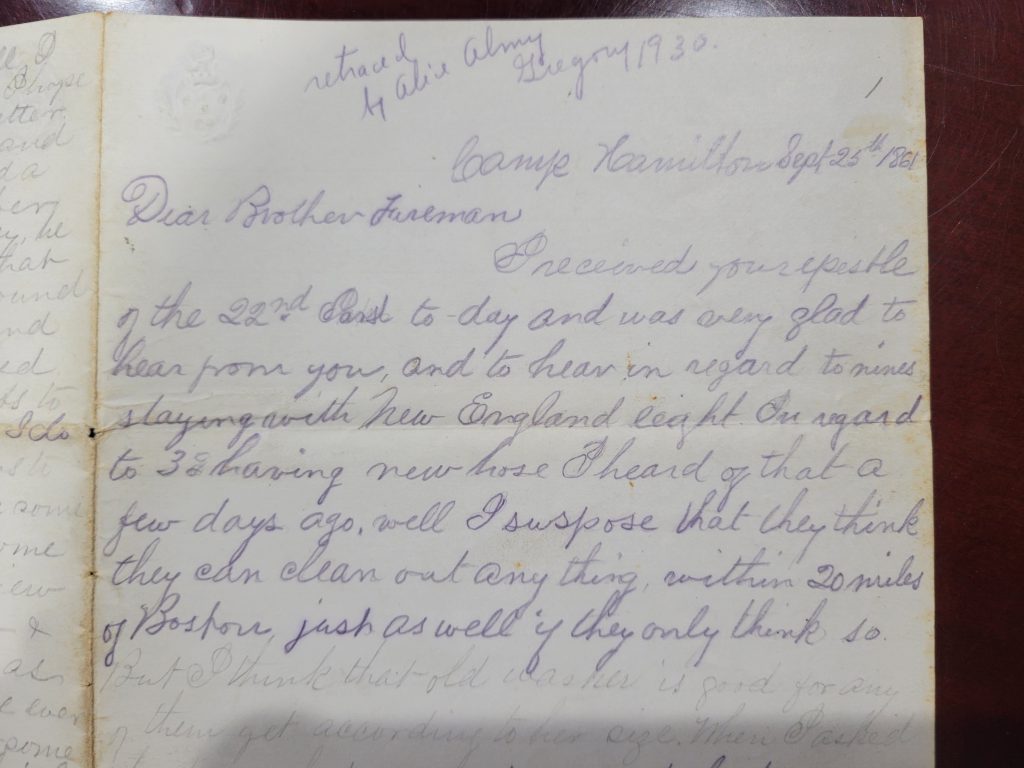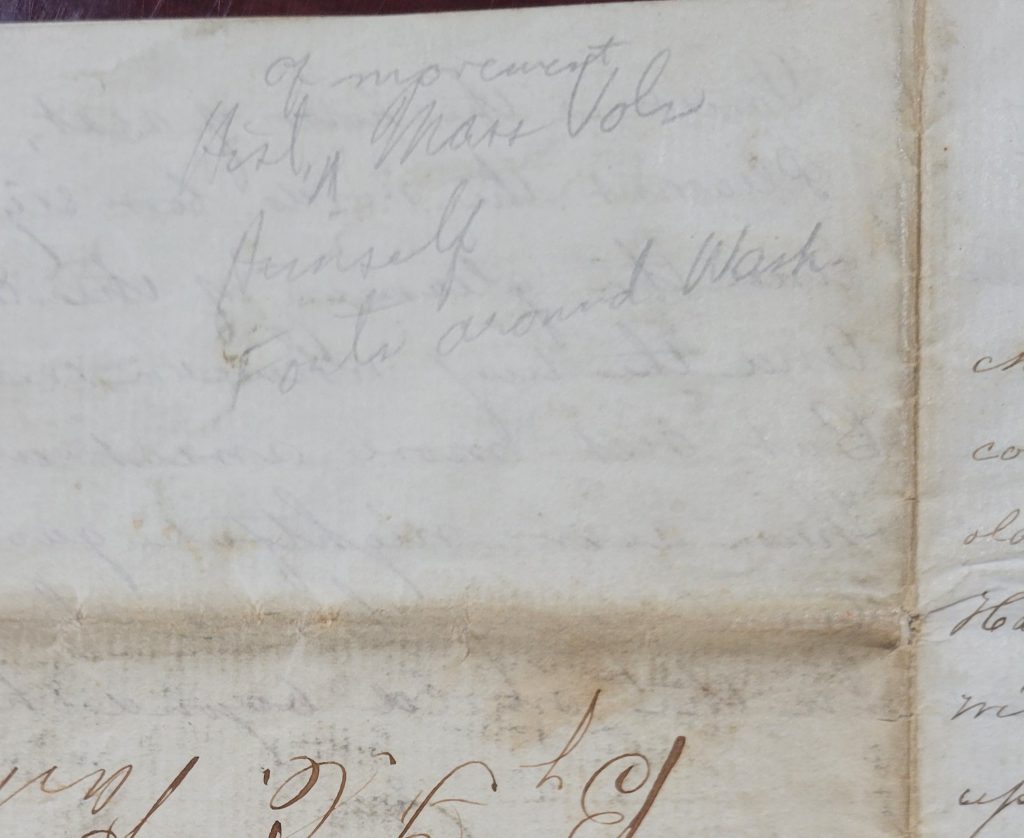Angry Archivist: Stop Writing on and Putting Sticky Notes on Historical Documents
Angry Archivist: Stop Writing on and Putting Sticky Notes Historical Documents

You may remember that I wrote (ranted) about people marking up original historical documents with ballpoint pens. I am frustrated to say that the trend continues as I’ve found more Civil War letters traced with ballpoint pen (thanks, Alice). I also want to point out another common thing I find in archives that I believe is more the work of sellers as opposed to collectors, but either way, it’s annoying—leaving notes on historical documents. These notes are either written on the documents themselves or on sticky notes stuck to the original documents. Both are bad.
For a hypothetical example, here’s an original letter written by a Civil War soldier who describes that he hasn’t heard from his cousin since the Battle of Gettysburg, and that he could really use some new pairs of socks since his have gotten worn from all of the marching. What a nice handwritten letter. Then you flip it over and, on the back, (usually in giant letters) are terms like “GETTYSBURG” then you’ll find other keywords virtually shouting at you, “SOLDIER CONTENT,” “HOMEFRONT,” “GETTYSBURG, GETTYSBURG, GETTYSBURG…” you get the idea. Sometimes this is written directly on the letter and other times it’s written on sticky notes stuck to pages. DID YOU KNOW THIS DIARY PAGE MENTIONS GETTYSBURG??? Here’s a neon pink Post-it note stuck directly onto the faint pencil writing (although we can fix that by tracing it with a ballpoint pen, can’t we? NO, Alice.)

I get it, you’re a seller and you’ve got some great content in that old diary (GETTYSBURG) and the more you can tout that, the more you can sell it for. It’s a business. I understand that, really, I do. HOWEVER, there are ways to keep track of this fantastic content you are trying to sell without plastering it full of non-archival and damaging sticky notes, or writing all over it (BUT IT’S IN PENCIL!!!).
Here’s the thing: yes, archivists do use pencils on documents. To write catalog numbers on them. THAT IS ALL. They do not underline or annotate historical documents to the point that they look like a teenager’s CliffsNotes to “The Grapes of Wrath.” Pencil can be erased. This is correct. However, every time you write and erase something, it takes a layer or paper with it, and oftentimes there’s still a faint mark where the writing was. If the document was even slightly dirty (which, let’s face it, we’re talking about 160-year-old Civil War papers, there is going to be some dirt) the eraser will take that with it so now you have a weird, discolored patch on the document. Sort of like when you clean up Fluffy’s hairball with carpet cleaner and now that patch of carpet is just ever so slightly lighter than the rest of the carpet and it drives you up the wall, but I digress.
And sticky notes? No. Just no. When it comes down to it, sticky notes are paper with an adhesive back, like tape, but with a “repositionable” and weaker adhesive. At the end of the day, they are still adhesive and whether you see it or not, they do leave residue behind. Especially, when they are left on a document for any length of time or exposed to extreme heat. Anyone mailing documents in the summer? This is a problem.
Alternatives to Sticky Notes and Written Notes

But, as usual, I’m not just here to rant. There are alternatives and solutions to these sorts of things.
First of all, there is no need to write a keyword salad of a document’s contents directly on the document. Historic documents should be kept in sleeves so that they are shipped protected—write your keyword salad on a Post-it note on the sleeve (yes, sticky notes are acceptable here because they are not touching the original document).
As for flagging “significant” pages in a diary, simply use a small piece of archival paper inserted into the book. Make sure that it sticks out of the top and you can write on the outer portion what is in the book. In a perfect world, the diaries would not have paper inserts highlighting specific pages, but I understand that sellers and perhaps collectors like to have easy reference to those. Although if you are a collector, I would highly recommend that you simply digitize the diary and use that for quick reference rather than flipping through the diary over and over and eventually weakening it considerably. But if you simply must use something to identify a certain page, do not put a paperclip on it, do not put a sticky note on it, just use a “flagger” made of archival (non-sticky) material with a portion sticking out of the book with your notation. Easy peasy.
And one more thing, all of these notes we’re talking about (and transcriptions) are all examples of information that can be kept with you collection digitally. If you make use of collection software, all of this can be kept with those records, so there is no need for sticky notes, tracing old writing to make it more “readable,” etc.
Just to reiterate: No ballpoint pens on archival documents (I know what you did, Alice). No sticky notes on archival documents. And no superfluous keyword salads on archival documents. Please and thank you.

